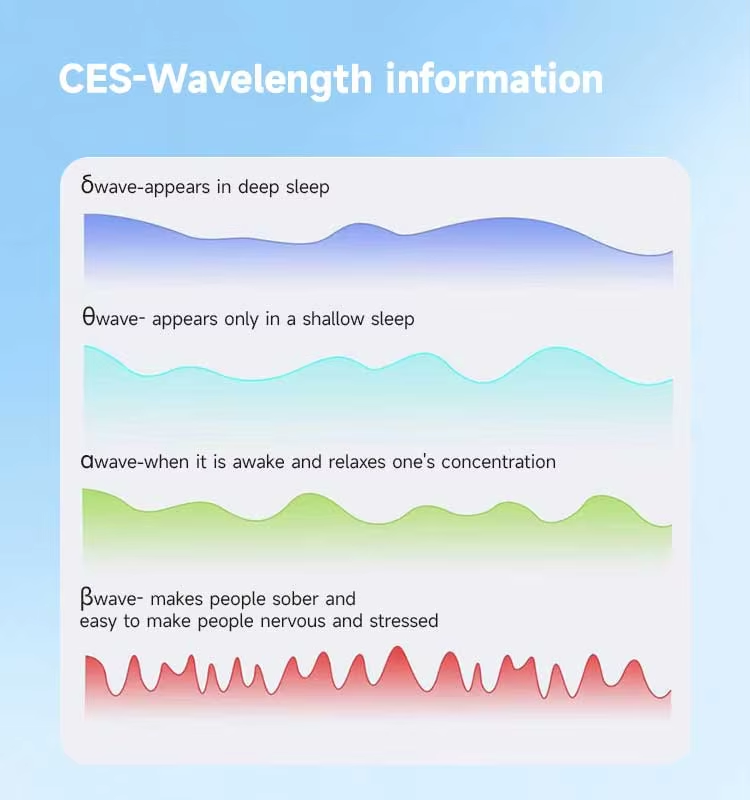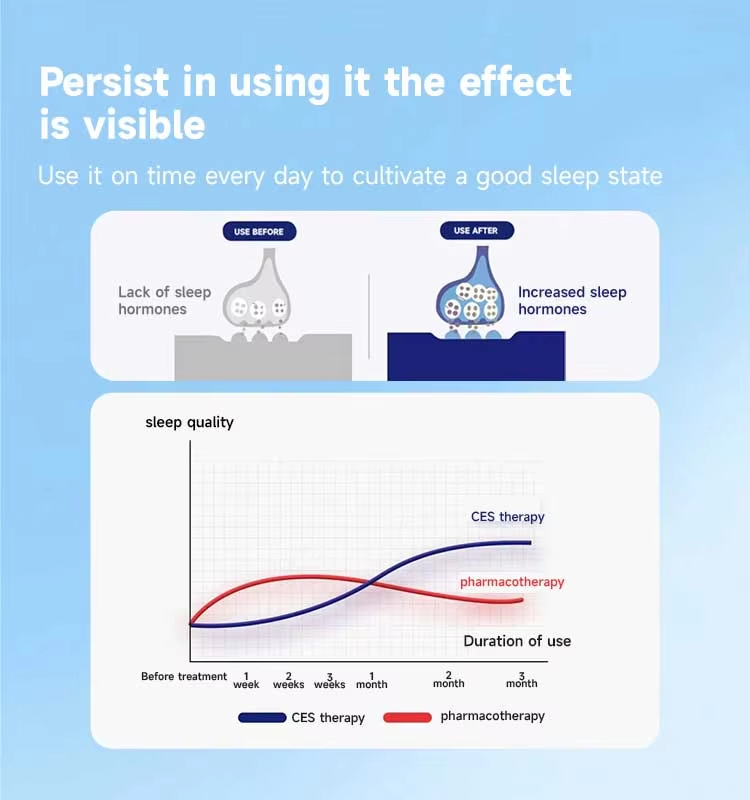CES(Cranial Electrotherapy Stimulation) 또는 두개 전기자극요법(일명 "경두개 미세전류 자극")은 비침습적인 물리적 치료 방법로, FDA의 안전 인증을 획득했으며 일반적으로 부작용이 없는 것으로 간주됩니다.
이 치료의 핵심 메커니즘은 뇌의 변연계에 부드럽고 확산된 자극을 주기 위해 저강도의 미세전류를 사용하는 것으로, 신체의 자연적인 파동 주파수를 모방합니다.
이러한 자극은 불규칙한 뇌파를 조절하는 데 작용하며, 보다 깊고 안정된 수면을 돕는 데 기여할 수 있습니다.
CES는 뇌가 엔도르핀(기분을 조절하고, 침착함을 유도하며, 전반적인 정서적 균형에 기여하는 자연적인 화학물질) 분비를 촉진하도록 도와줍니다.
실제 적용 시 이러한 효과는 경미한 긴장감이나 불안정한 감정을 완화시키는 데 도움이 되며, 마음과 몸이 더욱 이완된 상태를 유지할 수 있도록 지원할 수 있습니다.
기분과 감정, 불안감을 포함한 감정들은 뇌의 전기화학적 신호에 의해 조절되며, 이러한 신호는 신경전달물질과 호르몬의 균형에 의존합니다. 이러한 신호가 방해받게 되면 긴장 수준이 높아지거나 감정적인 불편함이 유발될 수 있습니다.










